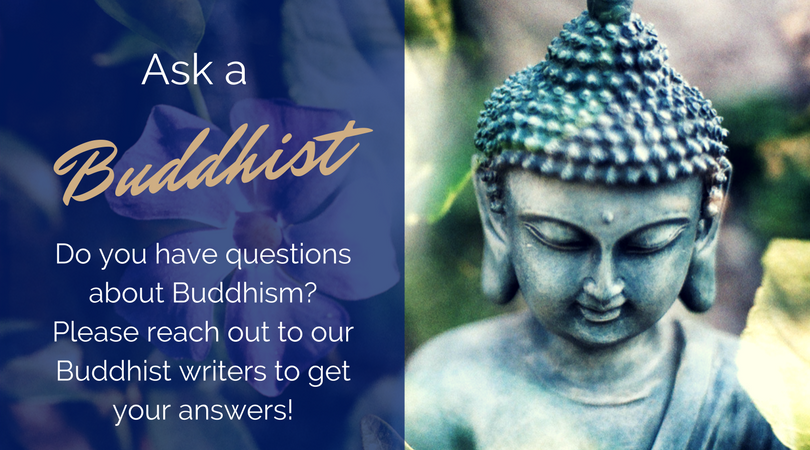Ask A Buddhist: Maitreya Buddha
What do you want to ask a Buddhist? Fill out the form below or submit your question online.
Who is Maitreya Buddha and When Will He Come?
Many buddhas exist, but not all buddhas teach or “turn the wheel of Dharma” to establish a new lineage of the teachings. It is said that we are in a “fortunate eon “because 1,000 buddhas will come to our world and Maitreya is the fifth in that line.
And who is a buddha? Buddhas are called “enlightened beings” because they have cultivated all good qualities like love, wisdom, and ethical conduct to their perfection, and have abandoned all destructive emotions like hatred, jealousy and greed. As a result, they move beyond the sorrow of our world and become buddhas.
Buddhas’ compassion and love for all living beings is limitless; they stay connected to us with their minds and hearts and their only motivation is to guide and help all beings free themselves from their negative emotions and grow their good qualities to perfection in order to become buddhas themselves.
It may be helpful to know that every buddha at one time was an ordinary living being just like us. They struggled with ignorance, anger, greed and confusion and acted harmfully towards others. As a result they took rebirth life after life struggling to find happiness and avoid suffering. In other words, they have not always been buddhas.
All buddhas begin their journey when they meet the Dharma—the teachings of wisdom and compassion. The heart of the teachings is the four truths. The first and second truths describe the suffering and dissatisfaction all living beings experience as well as the causes—destructive emotions, distorted views and actions—that give rise to that suffering.
The third and fourth truths assure us that freedom or complete cessation from these unhappy states can be attained and the path to accomplish that is laid out in a very clear way. As a result, ordinary beings like us can become buddhas, too.
A long, long time ago as a bodhisattva, Maitreya specialized in the meditation on great love. He meditated on great love continually. Others were affected deeply by his love and gained a deep experience of it within themselves. He taught the way to develop such expansive love to others. Gradually Maitreya advanced through all the levels of spiritual development to become a fully enlightened buddha.
As for when Maitreya will come to our world, the timing of a buddha’s appearance in our world depends on many causes and conditions. We cannot fathom many of those causes and conditions, because they have to do with living beings’ accumulation of “merit”—goodness and positive deeds.
As Lama Yeshe, a Tibetan teacher who taught Buddhism to many Westerners during the 1970-1980’s, states in his teachings on Maitreya, “In the future, because of the growth of delusion, the beings in this world will degenerate; their lifespan will decrease and their lives will be filled with much suffering.” A that time, “Maitreya will manifest in the form of a great spiritual leader and demonstrate the path of virtue.
According to the prophesies of other buddhas and Maitreya’s own promise, Maitreya Buddha will appear in the world as a universal teacher, or founding buddha, like Shakyamuni Buddha did in our historical period.” In particular, Maitreya will spread the teachings on loving kindness and, as a result, the fortune of the humans in this world will begin to improve. They will gradually give up their deluded attitudes and harmful behavior and their lifespan will start to increase.
Maitreya’s life story will be similar to Shakyamuni Buddha’s life story, traversing from royal prince to renunciate to enlightened being. Through the power of his great loving kindness, he will benefit countless living beings. It is said that those who follow the teachings of Shakyamuni Buddha during this fortunate time and make sincere efforts to maintain their ethical conduct, will meet Maitreya and become one of his disciples. Until that time we are encouraged to practice loving kindness in our daily life and to be of benefit to everyone we meet.
We are fortunate that Shakyamuni Buddha’s teachings on love, compassion, wisdom, and the path to awakening still exist in our world today. We can practice right now to diminish the causes of suffering for ourselves and others, without waiting for Maitreya to appear. He will come when conditions are right, but we can emulate him now, by developing loving kindness ourselves.
https://form.jotform.com/form/82645103139150









